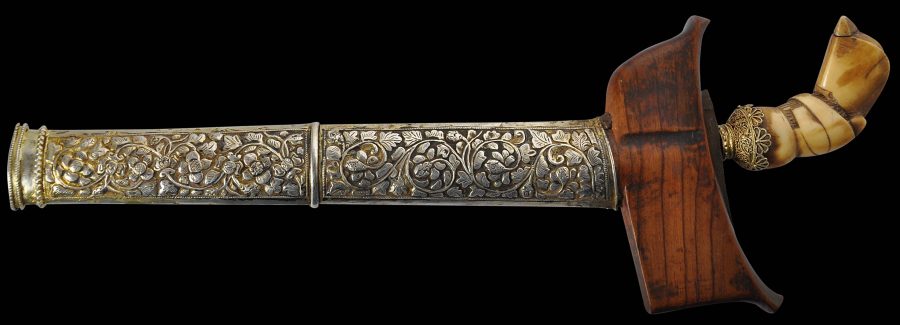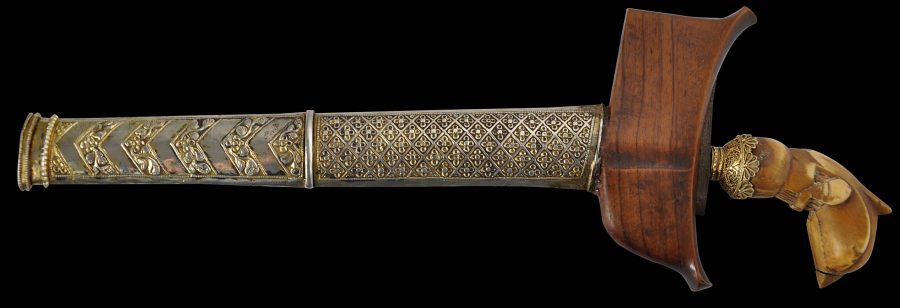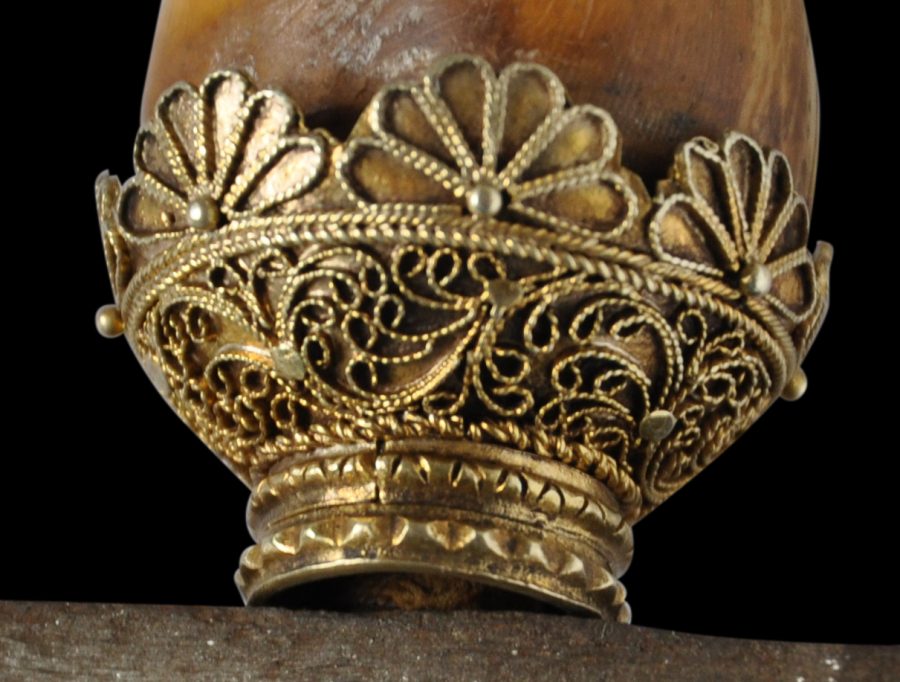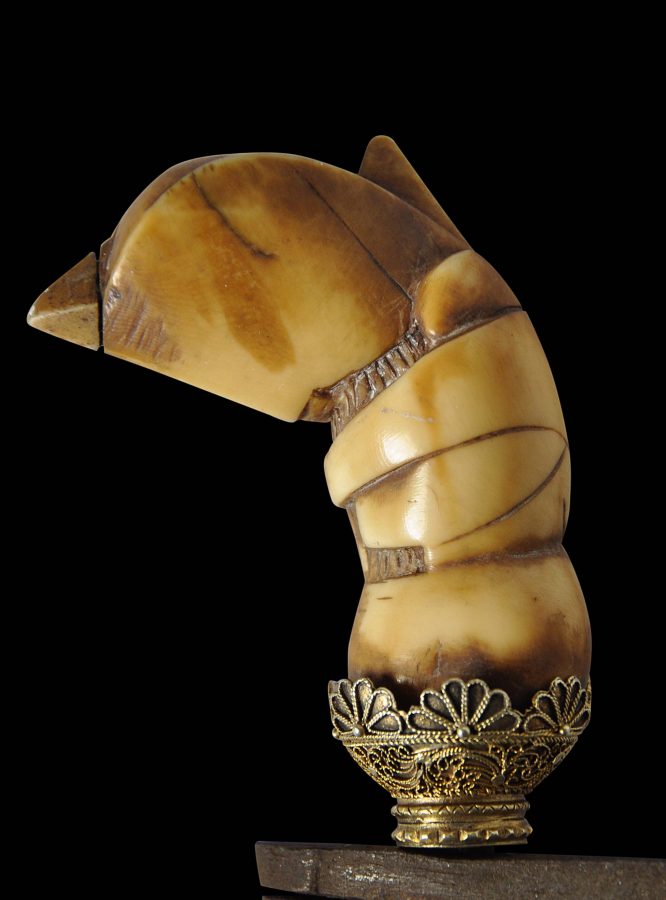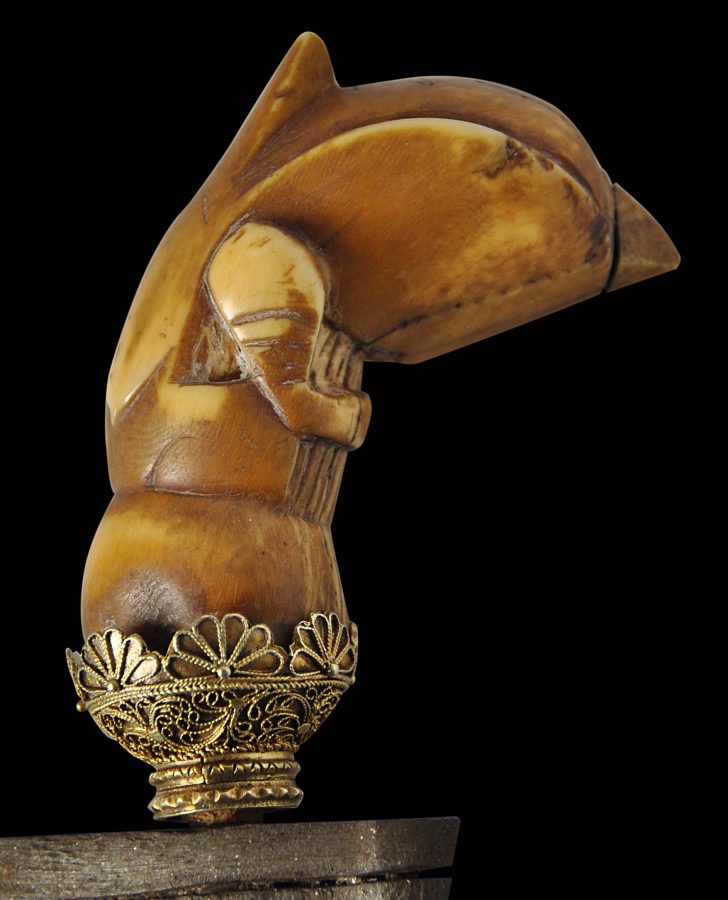The total stock of krises is overwhelmed by krises from Indonesia, particularly Sumatra and Java. Somewhat rarely are krises from the Malay Peninsula encountered. The precise origins of krises often is obscured because of trade and migration between Malaysia and Indonesia, but it seems likely that this kris has its origins on the Malay Peninsula, and most probably Terengganu.
This example has a straight, double-edged blade of damascened iron. The wooden scabbard is encased in gilded (gold plated) sheet silver which has been repoussed on one side with scrolling water-plant foliage and flowers, and on the other, with flowers amid geometric patterning.
The hand-guard is of plain wood and is shaped like the keel of a European sailing vessel leading some to speculate that this might have been the impetus for this shape.
The hilt is of carved tooth which would have been traded to the Malay Peninsula most probably by Hadrami traders from southern Yemen. It has a wonderful honeyed patina and has a zoomorphic form most usually referred to as a jawa demam. The beak on the figure appears to be a separately applied section.
The hilt ring is of gold and gold filigree.
The kris is in very fine condition and has an overall wonderful, soft patina associated with age. It was acquired in the UK and most probably has been in the UK since colonial times.
References
Caravana, J. et al, Rites of Power: Oriental Weapons: Collection of Jorge Caravana, Caleidoscopio, 2010.
Gardner, G.B., Keris and other Malay Weapons, Orchid Press, 2009 (reprint of 1936 original).


